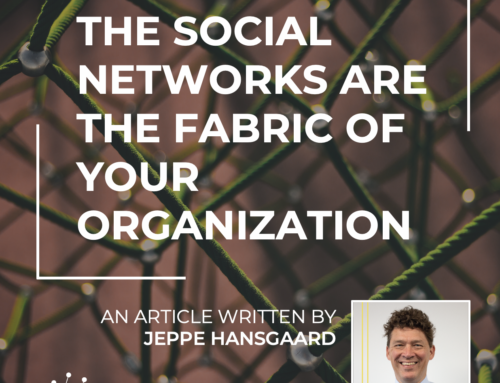
Don’t Get Fooled By Organizational Network Analysis: Data Collection Matters!
In the beginning of 2017, Deloitte published the global human capital trends for that year. They found out that 71% of companies saw people analytics as a high priority in their organizations and that organizational network analysis would see an explosive growth.
Now, we are in the beginning of 2018. Time to reflect on this explosive growth of Organizational Network Analysis. Why? Because with such a growth, the providers of Organizational Network Analysis – like us at Innovisor – have a responsibility. The responsibility is to minimize noise and to maximize the value for companies.
What is the noise around Organizational Network Analysis?
Through my conversations with those who are interested in Organizational Network Analysis, I have observed that there is a good understanding of what Organizational Network Analysis is. Obviously, publications from Bersin by Deloitte and the lively discussions in the global People/HR Analytics communities have helped greatly with this awareness.
It is the approach that contains most noise. It is for many people not clear what data are collected for the generation of the unique insights and the recommendations on specific actions. And it matters what and how you collect data.
Data Collection: Active or Passive Data Collection
The data foundation for an Organizational Network Analysis is either based on data that are collected passively or actively.
Passive data collection occurs by monitoring behavior through sophisticated technologies of for example email traffic. Active data collection occurs by asking people to answer via a survey.
The market of Organizational Network Analysis has increasingly moved to passive data collection. The simple reason for this is that the active data collection has been faced by a decreasing number of people who opted-in. At the same time, the advances in sophisticated technologies, has made it easier to collect data. Now you don’t need to ask people to share their input; you can track their behavior and relationships automatically.
The opt-in issue can however easily be fixed. It is not because people don’t want to share their input. It’s because companies are not transparent enough to tell their employees, why they want people to respond. At Innovisor, we do not have an opt-in issue due to the emphasis on communications.
What is the problem with the growing move to passive data collection?
I believe it is the wrong path to generate unique insights and actionable recommendations based on passive data. The validity of data through passive data collection is troublesome when comparing it with active data collection.
Firstly, because when you track; you observe without intervening or without fully understanding the context of a relationship. The analyses of these observations are therefore then strongly influenced by the personal biases of the observer. A global manufacturing company used all metadata from their email system. They looked at who wrote to whom, when, where and much more. This gave them a lot of insights on how they communicated, but not much about why. The context or meaning of the relationship is missing and with that almost impossible to use to get actionable recommendations. And even if the sophisticated technologies would give an organization the possibility to index full emails, this would be challenged by data privacy and ethics.
Secondly, because you are often looking at incomplete data that can’t represent the whole organization. This is often the case when using data from Enterprise Social Network platforms. A global professional service company had 220,000 unique accounts connected to their Enterprise Social Network platform. When looking closer at these accounts, only a limited number of accounts were active accounts. They were too few and there was little updated content. A classic example of the 1-9-90 rule of thumb: 90% only view content, 9% edit content, and 1% actively create new content.
Conclusion
Do not compromise on the data foundation.
- The data should be representative and cover most of the organization. Not only those that are visible on enterprise social network platforms and the more extrovert employees, because according to our work on identifying key influencers, time after time we can see that introverts have more influence — Read: Why Introverts Have More Influence

- The data should be contextual. Why is there a relationship between two persons? Is this because you go to one person because he or she is competent? By understanding why people connect, unconscious biases in the analyses are eliminated and you can get to actionable recommendations. Active data collection is therefore most preferable! The challenge is of course to collect data through surveys from as many possible employees. Survey design and communications to the organizations are just a couple of key success factor.






